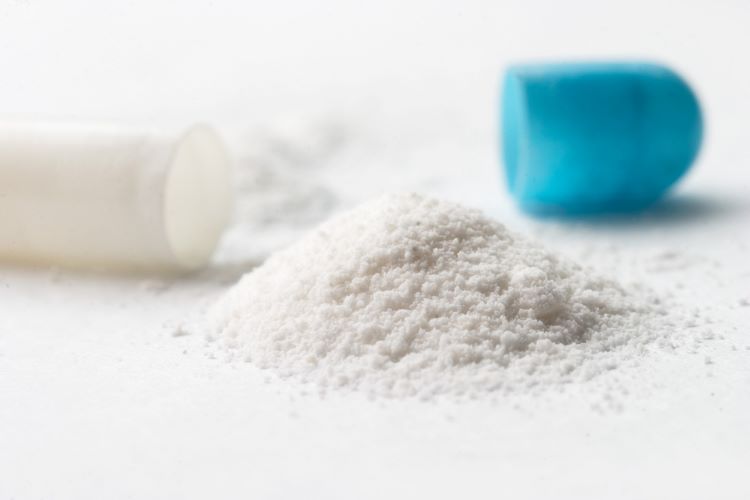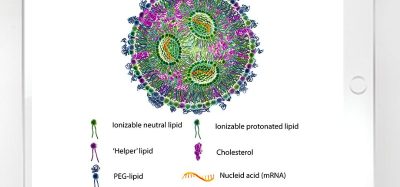Novel two-chamber setup could predict HPAPI dustiness
Posted: 9 February 2023 | Catherine Eckford (European Pharmaceutical Review) | No comments yet
A two-chamber setup (TCS) for containment investigations could predict the dustiness of HPAPIs in a sealed system at different flow conditions.


Researchers have shown that a newly developed two-chamber setup (TCS) for containment investigations consisting of an emission and a detection chamber may predict highly potent active pharmaceutical ingredient (HPAPI) dustiness in a sealed system at different flow conditions.
These different flow conditions include the plain diffusive transport and the diffusive transport with the oppositely directed convective flow of airborne particles of the safe surrogate substance acetaminophen (ACAM).
HPAPI dustiness
Dustiness is defined as the propensity of a material to generate airborne particles during its handling. Processes in pharmaceutical manufacturing such as processing, milling, grinding, and mixing, are associated with the generation of dust. Thus, formulation dust containing HPAPIs is a major problem concerning potential exposure.
The researchers highlighted that the risks of hazard exposure include danger to the health of operators and cross-contaminations during manufacturing.
To guarantee the safe manufacture of dosage forms containing HPAPIs, special production setups are applied which are operated at a negative pressure. This reduces the risk of potential airborne transfer to the immediate environment, the research stated. Barrier isolators, special transfer and valve systems, and high-performance filters are further governance methods to reduce the risk of hazards.
An objective of this study, published in a Special Issue of Advanced Pharmaceutical Science and Technology was the generation of an adjustable oppositely directed convective flow from the detection to the emission chamber within the TCS, simulating the negative pressure for reduction of the potential hazard exposure.
HPAPIs in containment investigations
A reproducible dust generation requires a standardised method. Therefore, a high standardisation with relation to industrial manufacturing processes is essential for suitable dustiness measurements.
Most systems used to measure the dustiness of solid substances in a reproducible manner are not designed for pharmaceutical powders, as the required substance quantities for these measurements are relatively high. Accordingly, because of the typically scarcely available quantities of HPAPIs, the measurements are limited and relatively expensive. The compounds used in the pharmaceutical production are exposed to a wide variety of stresses. Thus, no single test system may reproduce all conditions during handling, the research observed.
The researchers wanted to develop a novel TCS consisting of an emission and a detection chamber to investigate the dustiness depending on different flow conditions. A further aim of this study was to confirm that the newly developed TCS ensured a reproducible and precise dustiness investigation of pharmaceutical powders.
The atomisation of powders results in an airborne particle distribution. Particle size distribution, particle shape, bulk density, humidity, and the cohesive and adhesive forces of powder particles have a major influence on the resulting dustiness.
The different parameters of the atomisation phase, transport phase, and detection phase may influence the investigation of the TCS.
In this context, the research identified two crucial parameters that may significantly influence the dustiness investigations in terms of the reproducibility and precision of the results:
- Reproducible and precise atomisation of small amounts of the surrogate substance ACAM
- The accurate determination of the dust emission by an IOM sampler (Institute of Occupational Medicine).
Study results assessing HPAPI dustiness
The researchers predicted that deviation from the linearity for atomised amounts above 400mg was potentially caused by a saturation effect within the system.
In the study, a linear correlation was found between an atomised amount of up to 400mg of ACAM and the resulting dust emissions. Emissions were reduced significantly by an oppositely directed convective flow. This demonstrated that using either atomised ACAM or smoke for the determination of the evacuation time of the detection chamber, indicated the comparability of both methods.
Computational fluid dynamics (CFD) simulations performed to determine the evacuation time showed that nine minutes was sufficient for a reproducible evacuation and a reliable detection of most airborne ACAM particles within the detection chamber. An extension of the evacuation time did not result in a significant increase in the detected particles.
These simulations revealed that the air flowing through the orifices of the detection chamber for pressure compensation caused a rotating and downward flow towards an IOM sampler.
The ACAM used in the HPAPI dustiness experiments exhibits powder properties comparable to other commonly used pharmaceutical powders. A high reproducibility of the dust emission was observed, as confirmed by low standard deviations.
Furthermore, the TCS was proven to be suitable for the investigation of the dust emission at the different flow conditions described.
Wirth et al. concluded that the new TCS allowed for a containment investigation of small amounts of pharmaceutical powders, with regard to their dustiness, within a justifiable time. Ultimately, the results indicated that an increase in the pressure difference between the emission and the detection chamber led to a major reduction in dust emissions.
Related topics
Active Pharmaceutical Ingredient (API), Biopharmaceuticals, Drug Safety, Lab Equipment, Manufacturing, Material Identification, Microparticles, Toxicology









